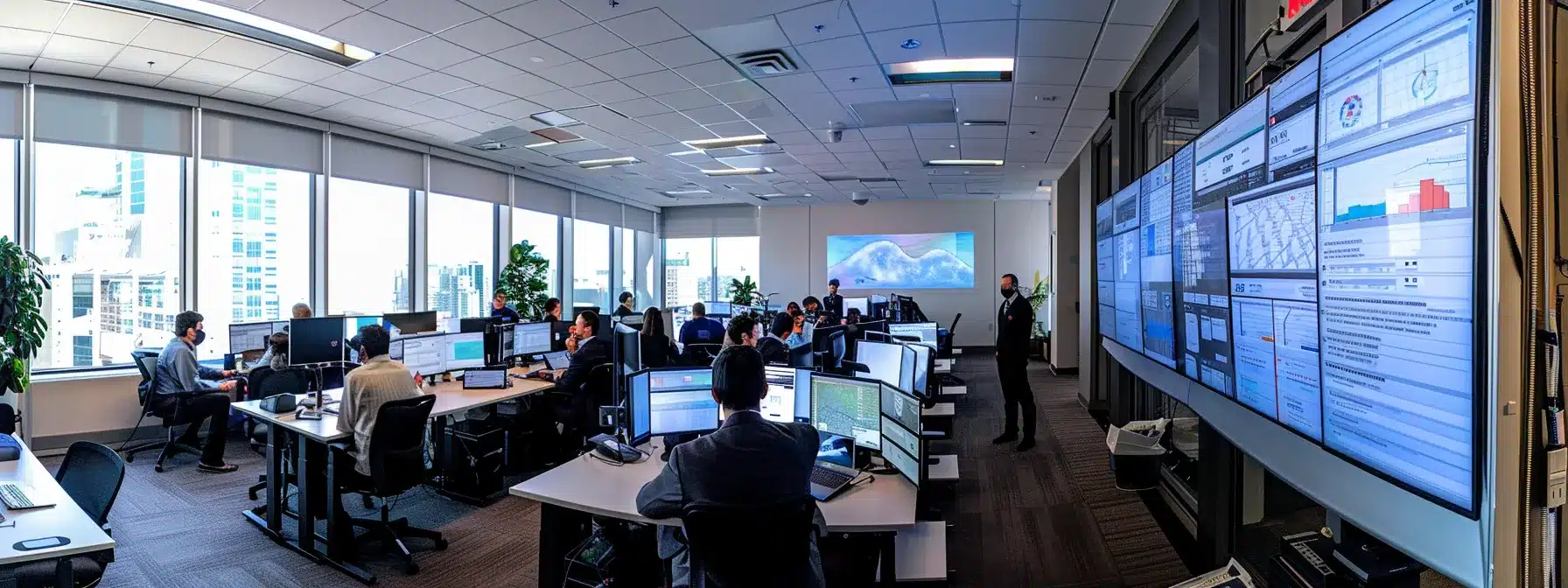
Discover Top Software for Identifying Coverage Gaps
Identifying coverage gaps can be a challenging task for healthcare providers. In an environment where missed opportunities can lead to lost revenue, recognizing these gaps is crucial. This article will review top software solutions designed to simplify this process, guide the implementation of these tools, and explore strategies to maximize their effectiveness. Readers will learn how to mitigate the risk of claim denials and enhance financial performance through accurate coverage identification. The insights provided will help healthcare professionals address this common issue and strengthen their billing processes.
Overview of Coverage Gaps in Software

Identifying coverage gaps is essential for ensuring robust protection in the ever-evolving software landscape. Common challenges in detecting these vulnerabilities include complexities in logic and integration, particularly within platforms like OpenShift. Understanding these obstacles aids in navigating digital transformation efforts, enabling organizations to implement strategies that effectively close coverage gaps.
Understanding the Importance of Identifying Coverage Gaps
Identifying coverage gaps is vital for improving software quality and ensuring a secure digital environment. By utilizing tools like Splunk, organizations can monitor behavior and pinpoint discrepancies that may indicate vulnerabilities. Employing frameworks such as MITRE ATT and conducting thorough root cause analysis allows teams to systematically address these gaps, fostering a reliable software landscape and enhancing overall operational integrity.
Common Challenges in Detecting Coverage Gaps
Detecting coverage gaps in software presents several challenges, primarily due to the complexity of integrating various system components. For instance, automation tools that utilize machine learning and natural language processing can struggle with user interfaces that are not designed for seamless interactions, leading to inconsistencies in data interpretation. Organizations must focus on enhancing their automation strategies to ensure these tools can operate effectively, minimizing the risk of overlooking critical vulnerabilities.
Top Software Solutions for Identifying Coverage Gaps

Key features in detection software are essential for enabling healthcare organizations to mitigate risk and effectively manage their attack surface. A comparison of leading software products will highlight their unique capabilities, while user ratings and industry feedback provide insights into real-world performance. Together, these elements equip providers to better understand their coverage gaps and enhance overall security.
Key Features to Look for in Detection Software
When selecting detection software for identifying coverage gaps, it is essential to prioritize features that optimize user experience and enhance analytics capabilities. Quality software should offer seamless integration with existing workflows, particularly for environments utilizing Red Hat infrastructure. By ensuring compatibility with server configurations and providing robust data visualization tools, organizations can streamline their monitoring processes and efficiently pinpoint vulnerabilities within their systems.
Comparison of Leading Software Products
When comparing leading software products for identifying coverage gaps, it becomes evident that incorporating machine learning enhances the ability to manage complexity in diverse environments. Solutions that integrate SIEM capabilities can effectively monitor security incidents and streamline inventory management. For instance, tools that leverage advanced analytics not only improve the detection of vulnerabilities across different species of systems but also provide actionable insights to mitigate risks and strengthen overall security posture.
User Ratings and Industry Feedback
User ratings and industry feedback play a crucial role in assessing software solutions for identifying coverage gaps in healthcare. Many users highlight the importance of an intuitive interface that allows seamless interaction, as well as alert systems that promptly notify providers about potential vulnerabilities. Feedback often points to the integration of asset management capabilities that ensure patient safety, particularly in relation to vaccine tracking and administration, underscoring the need for reliable solutions in today’s complex healthcare environment.
Implementing Software for Detecting Coverage Gaps

Setting up software for optimal performance involves ensuring visibility into data collection processes and establishing a reliable database for tracking test and code coverage. Integrating detection tools into existing workflows requires strategic planning, allowing organizations to effectively utilize software while minimizing disruption. This section provides practical insights on enhancing system performance through thoughtful implementation and seamless integration.
Setting Up the Software for Optimal Performance
To set up software for optimal performance in detecting coverage gaps, organizations should prioritize correlation capabilities that facilitate real-time threat detection. Implementing tools alongside DevOps practices can significantly enhance workflow efficiency, ensuring that testing and monitoring processes are seamlessly integrated. Teams are encouraged to document their setup processes thoroughly and request a demo from software providers to visualize the potential improvements in their security posture.
Tips for Integrating Detection Tools Into Existing Workflows
Integrating detection tools into existing workflows involves careful planning to maintain efficiency and minimize disruptions. Organizations should consider utilizing web services that support XML for seamless data exchange, as this can enhance the compatibility of various systems. Attention to authentication processes is crucial; ensuring proper security measures are in place not only protects sensitive information but also boosts the effectiveness of integration efforts, making it easier for teams to identify and address coverage gaps across their software environments.
Maximizing the Effectiveness of Coverage Gap Detection

Implementing best practices for regularly updating software ensures that detection engineering remains effective in identifying coverage gaps. Organizations should focus on analyzing and interpreting coverage gap reports to enhance software development efforts. By utilizing telemetry data and refining test cases within software testing, teams can develop a more robust approach to maintaining security and performance across their applications.
Best Practices for Regularly Updating Software
Regularly updating software is key to maintaining robust quality assurance and mitigating potential threats. Organizations should establish a clear policy that outlines the frequency, processes, and criteria for software updates, ensuring alignment with the latest security protocols. Additionally, incorporating feedback mechanisms can help identify bias or other flaws related to specific organisms or systems, allowing teams to make informed decisions regarding necessary enhancements and bolster overall protection against vulnerabilities.
Analyzing and Interpreting Coverage Gap Reports
Effectively analyzing and interpreting coverage gap reports is crucial for enhancing application security within organizations using software like New Relic. By focusing on observation and intelligence derived from these reports, teams can identify vulnerabilities that may impact their mobile app performance. Regular review of these insights enables providers to address weaknesses proactively, ensuring that their software remains robust against emerging threats in an ever-changing digital landscape.
Case Studies of Successful Coverage Gap Identifications

Real-world applications of detection software have demonstrated significant success in identifying coverage gaps. These case studies reveal crucial lessons learned from coverage gap detection using advanced tools such as EDR systems. By analyzing specific examples, organizations can gain practical insights into effective strategies for optimizing their security posture and addressing vulnerabilities in their systems.
Real-World Applications of Detection Software
Real-world applications of detection software have proven transformative for organizations aiming to identify coverage gaps effectively. For example, a healthcare provider utilized advanced detection tools to enhance their security measures by uncovering previously hidden vulnerabilities in their patient management system. This proactive approach not only safeguarded sensitive data but also streamlined their operational workflows, leading to significant improvements in compliance and patient satisfaction.
Lessons Learned From Coverage Gap Detection
Lessons learned from coverage gap detection emphasize the importance of proactive monitoring and continuous improvement. For instance, one healthcare organization discovered that implementing advanced detection software not only identified significant vulnerabilities but also streamlined audit processes, enhancing compliance. This experience underscores how organizations can leverage technology to stay ahead of potential risks while fostering a culture of security awareness among their teams.
Future Trends in Software for Detecting Coverage Gaps

Innovations in software for detecting coverage gaps are transforming the healthcare landscape. Emerging technologies are set to enhance gap identification, making it crucial for organizations to prepare for these advancements. This section will explore new strategies shaping the future, along with practical insights on preparedness for utilization of these technologies in coverage detection.
Innovations Shaping the Future of Coverage Detection
Innovative technologies, such as artificial intelligence and machine learning, are poised to transform coverage gap detection in healthcare software. These advancements enable automated monitoring and more accurate identification of vulnerabilities within complex systems. By leveraging these cutting-edge solutions, organizations can significantly enhance their risk management processes and address potential security weaknesses more proactively.
Preparing for Emerging Technologies in Gap Identification
Organizations looking to stay ahead in gap identification must prioritize preparedness for emerging technologies in software detection. By investing in training for their teams on advancements like artificial intelligence and machine learning, they can enhance their ability to spot vulnerabilities in real time. Additionally, collaborating with software providers to ensure robust integration of these technologies into existing systems will enable organizations to build a more secure and efficient operational framework.
Conclusion
Identifying the right software for detecting coverage gaps is crucial for enhancing security and operational efficiency in healthcare organizations. These tools provide vital insights that help organizations pinpoint vulnerabilities and streamline management processes. Key features, combined with real-world applications and feedback, underscore their effectiveness in addressing safety concerns and ensuring compliance. By prioritizing the adoption of advanced detection software, healthcare providers can effectively mitigate risks and strengthen their overall security posture.

